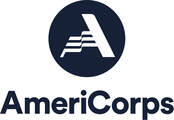|
By Cynthia McCloud
Republished with permission from the State Journal, http://www.statejournal.com A project that would turn the historic Arthurdale High School, seen in a recent PBS documentary titled “The Roosevelts,” into 12 apartments has been flushed. The developer, AU Associates of Lexington, Kentucky, has discarded its plans after it couldn’t arrange a system to treat and discharge sewage. Holly Wiedemann, founder and president of AU Associates, said in 25 years of renovating old public buildings, she has never had a project awarded she didn’t complete. AU has completed other projects in West Virginia, including turning the historic First Ward School in Elkins into a low-income senior community apartment complex and turning Clendenin Middle School into 18 units of senior housing and a health care clinic. ‘A big financial hit’ “All we wanted to do was preserve what we felt was a remarkable icon,” Wiedemann said. “It just broke my heart, quite frankly, not to mention it was a very horrific blow to me financially. “We have lost a significant amount of money since we had to pay for architectural plans, engineering, extensive … testing … it has already passed six figures.” To pay for the renovation, AU had lined up HOME funds via the W.Va. Housing Development Fund that had to be expended by Nov. 25, 2015, plus federal and state historic tax credits purchased by Clear Mountain Bank, and construction lending from Clear Mountain. AU has since turned back the funds, Wiedemann said. Arthurdale is the first of 100 New Deal planned subsistence homestead communities founded by Eleanor Roosevelt during the Great Depression to improve the quality of life of impoverished Americans. Arthurdale Heritage Inc., the nonprofit organization charged with preserving and promoting the properties, had been counting on the $29,000 it would receive from selling the building to AU. “This was a big financial hit to us,” said Jeanne Goodman, AHI executive director. “We have been counting on this money since May, since the problems seemed to be temporary. We are always hard up for money since we have no steady income but plenty of steady bills. “This would have made getting through the winter easier and given us some needed breathing room and the ability to buy a few small needed items.” Goodman said AHI hooked up with AU after the Preservation Alliance of West Virginia added the schools to its endangered property list and she saw a newsletter item about AU’s interest in old schools. “I feel like my spirit’s been broken,” Weidemann said. “I can’t do anymore. I certainly can’t afford to spend any more in the hopes that this could come up with different answers than I’ve already turned up. I did everything I could.” Exhausting every possibility The school site is not served by a public sewer system, and a pure septic tank system wouldn’t handle the volume of discharge from 12 apartments. AU sought to treat its waste and discharge the treated water. “We were stunned to discover the area had zero ability to perc,” Wiedemann said. “It’s a clay soil that won’t percolate water. If you dig a hole, water will just stand there.” None of the surrounding land owned by Arthurdale Heritage Inc. and Preston County Schools would pass either. Even if the soil had passed, AU didn’t have enough land on its site to build a system large enough to accommodate all the gallons an apartment building produces in a day. V.J. Davis, registered sanitarian at the Preston County Health Department, said when considering a septic system application, he would calculate how many square feet of drain field would need to be installed to handle the discharge from a 12-unit apartment building — an estimated 3,360 gallons a day. Plus, he said, the state requires more land — at least as much as the original drain field takes up — to be available if the system fails and a new one has to be installed. He said there is not enough property where the old school sits on the plat to put in even one septic system large enough for 12 apartments. AU tried to find another way. The West Virginia Department of Environmental Protection regulations don’t allow directly discharging treated water into a stream near the property because it is seasonal. Laws also prohibit building up the land with extra dirt because drip fields have to be installed in previously undisturbed soil. It was cost-prohibitive to pump treated water to an acceptable stream, Deckers Creek, a half-mile away, Wiedemann said. AU asked Community Presbyterian Church, which owns 14 acres across the road from the school site if they could perform a percolation test. The congregation assented and the land, which is higher in elevation, passed the test. The church asked AU to exhaust all other possibilities before asking to lease or buy its land again. “We only would’ve needed an acre and a half,” Wiedemann said. “It would’ve been in the woods and you wouldn’t have seen anything.” Wiedemann asked Preston County Schools if AU could pay to get its waste treated by Valley Elementary’s system or if AU could tap into Valley’s discharge pipe that leads to Deckers Creek. But Superintendent Richard Hicks said the school could not share facilities with private entities. “Plus, we’re not sure about future expansion of our own out there and what our needs would be,” Hicks said. David Sneed, executive director of the West Virginia School Building Authority, said his office advised Hicks not to chance the liability. “There have been situations where school systems have had other entities tied — legally or illegally — into their sewage pipes and treatment plants,” Sneed said. “When there tends to be problems someone else causes, the school system ends up inheriting the costs. “The county would be responsible for anything on their line if something would go wrong.” AU went back to Community Presbyterian and the congregation voted to not sell or lease any of its land at this time. “It is our opinion that the church was not notified soon enough to get all the information we needed to make a good decision as to how to approach the matter,” church member Lorraine Weaver said in the church’s October newsletter. “At first, AU said they would only need one acre of land, then they said they needed one and one-half acres for the drip field,” Weaver continued to quote. “One-and-a-half acres measures to be 312-by-312 square feet. This amount would take up a very large part of the wooded area, more than we thought.” The church contacted health department sanitarian Davis for information. “All I said was if you do lease the property to them, they would need to have a lifetime easement for maintenance and expansion of the system if expansion was needed and we would have to have a copy of the agreement filed with the deed for the property,” Davis said. “You are giving someone permission to put a very large septic system on your property. “A lot of people just sell the property and it’s not their headache to worry about if the system were to fail.” Big ideas, no budget Wiedemann pointed out that any future use of the property will encounter this septic problem. “I just don’t see any future for it at this juncture,” she said. Davis said the best hope for future development of the property would be if the public sewer system was extended. “I really think public sewer is the answer if they’re wanting to turn that into apartment buildings,” he said. “Sometimes large septic systems fail.” Reedsville Mayor James Wagner said there are no plans at this time to extend public sewer service farther into Arthurdale, about a mile away. The town is still working to complete an extension that took on 53 original customers of the old Arthurdale Sewage Association’s community septic system. The original school buildings, which were used by Valley Elementary and Valley Junior High, closed soon after the county’s high schools consolidated into one and the middle school students were moved to a different campus in the ’90s. AHI has owned them for about 10 years and uses them for storage. “The school district sold them to AHI for $1,” Goodman said. “Rep. Alan Mollohan (D-W.Va.), I believe, got a $300,000 federal grant through Save America’s Treasures, which meant turning over ownership to Vandalia Heritage Foundation, who mothballed the buildings. “When they finished, they returned ownership to us and there was a 50-year easement so that we would have to return the money if we didn’t keep up the buildings and try to fix them up.” The board has had lots of ideas for the buildings over the years but no capital to make it happen. “AHI had idealized plans to make the high school a museum adjunct where the archives and a research library would be,” Goodman said. “Turn the cafeteria building into a rental space with kitchen, and then make the third building an artists’ rental space or something similar. “We got several small West Virginia University Brownfields grants to look for problems like asbestos and lead paint plus one to do a market study, which was pretty much what we thought for other ideas, maybe senior housing, day care, offices that draw their own traffic like insurance, etc.” Davis agreed a retail location, which would discharge far fewer gallons, might be able to manage a septic system at the site. But AHI has no money for renovations to move forward on its ideas. “It doesn’t make sense to have one building fixed up next to two that are derelict,” she said. “None of the buildings have a working HVAC system.” Comments are closed.
|
News and NotesCategories
All
Archives
May 2024
Subscribe to our mailing list to receive e-news updates on historic preservation news and events in West Virginia.
|
Get Involved |
Programs |
Contact UsPreservation Alliance of West Virginia
421 Davis Avenue, #4 | Elkins, WV 26241 Email: [email protected] Phone: 304-345-6005 |
Organizational Partners:
© COPYRIGHT 2022 - PRESERVATION ALLIANCE OF WEST VIRGINIA. ALL RIGHTS RESERVED.

 RSS Feed
RSS Feed



